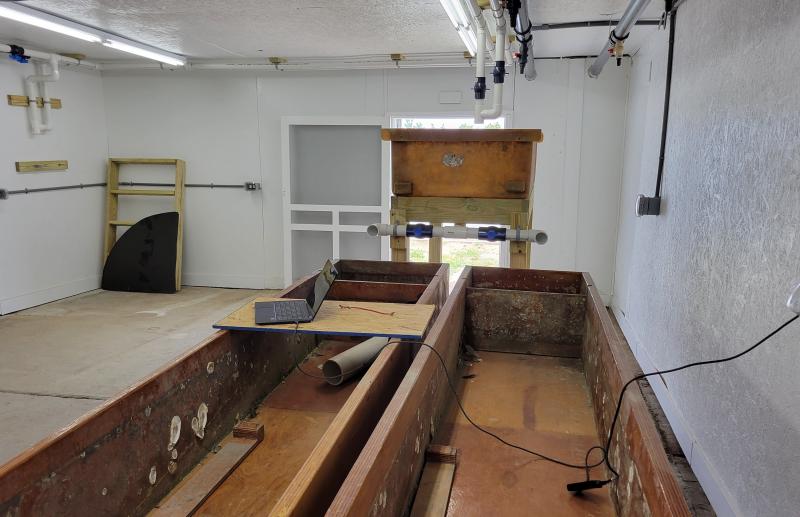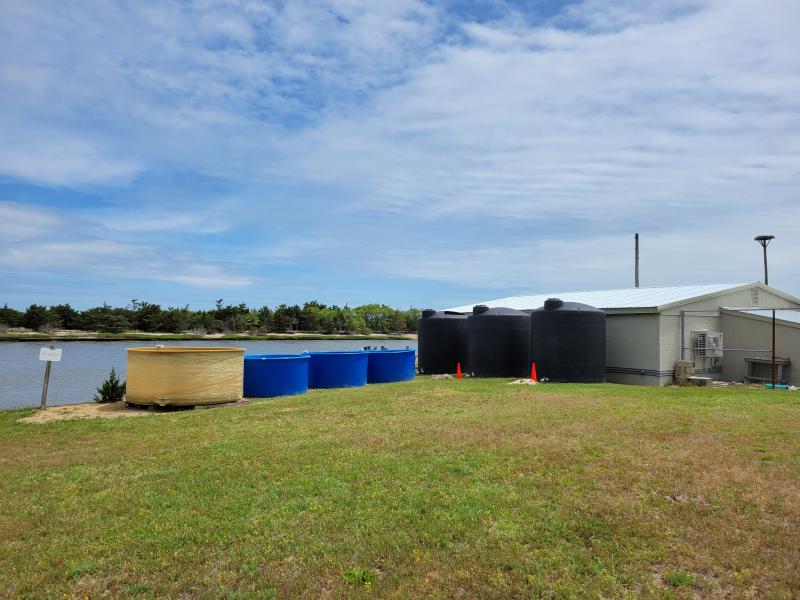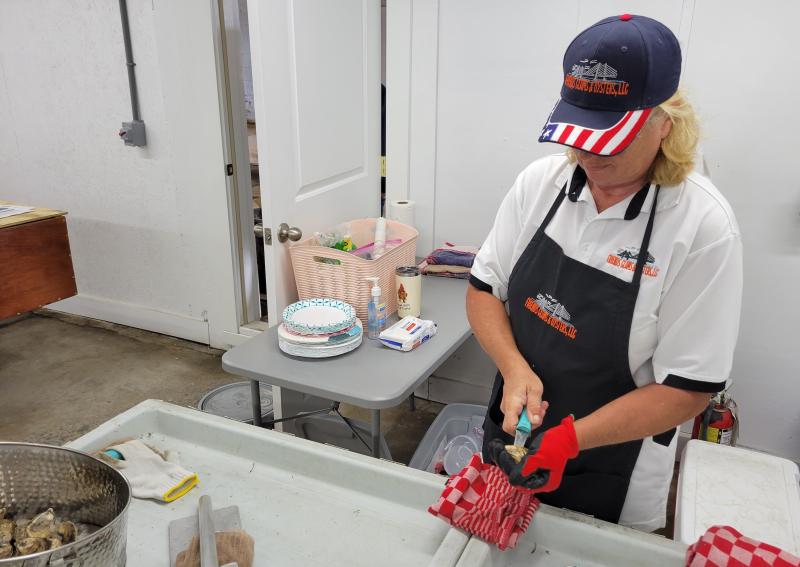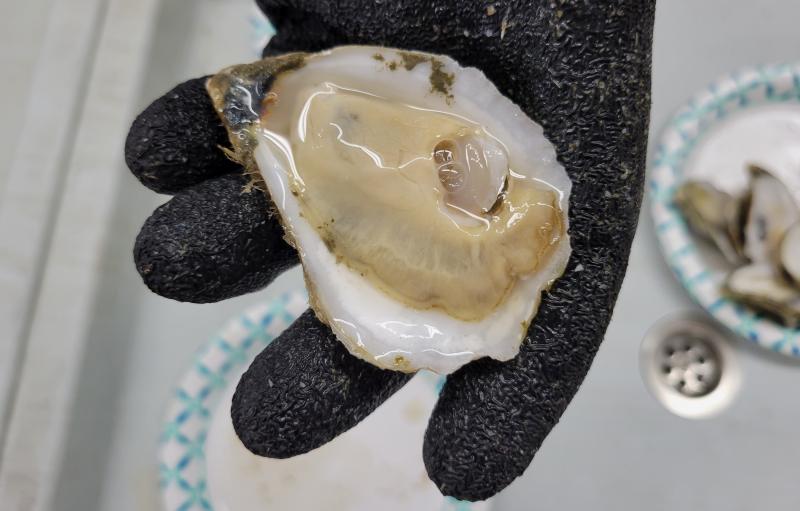Partnership to produce oyster larvae would be a Delaware first

Looking to meet the growing demands of local shellfish farmers, the University of Delaware, Delaware State University and Delaware Sea Grant are teaming up to build a shellfish hatchery in Lewes. It would be the first of its kind in Delaware.
The three entities recently held an open house at the hatchery. The small, one-story cinder block building sits off Pilottown Road and is located next to the Marine Education, Research and Rehabilitation Institute facility, immediately adjacent to the Lewes-Rehoboth Canal.
Dennis McIntosh, Delaware State University professor and Delaware Sea Grant marine advisory specialist, was one of the subject experts on hand to explain the need for the program. Right now, he said, local shellfish farmers are buying their seed, or spat, from out-of-state vendors, which creates a bottleneck in the supply chain.
In addition to supply chain issues, buying seed out of state means that seed needs to be tested first to make sure it’s not carrying harmful diseases that would hurt the Inland Bays, said McIntosh. Larvae and seed grown in Delaware will not be required to go through the same testing, he said.
At full capacity, the program might satisfy somewhere near 40% of the state’s demand, said McIntosh, adding that about 5 million seeds can fit in the palm of his hand. It will be a good start because right now the shellfish farmers are buying 100% of their seed from out of state, he said.
“There’s a demand for this. The farmers are already asking when the seed is going to be ready,” he said.
McIntosh explained the larvae-creating process – local adult oysters will be harvested and stored for a brief period in holding tanks with filtered saltwater. While in the holding tanks, the oysters are fed a controlled mix of algae to make sure they’re as healthy as can be, he said.
After a while – a couple of days to a week – the oysters will be opened, their reproductive organs harvested and rubbed together. The fertilized eggs will be put into another group of tanks, with more controlled food sources, where they will be allowed to grow to the point where they begin attaching themselves to surfaces. However, instead of allowing them to attach, the sand-sized larvae will again be moved to another set of tanks, where they will be allowed to grow to a size that shellfish farmers can put in their cages. McIntosh said there’s regular movement to stop the larvae from attaching to each other or the tanks.
This is not new technology or a new process, McIntosh said, it’s just not being done in Delaware.
For now, the renovation of the facility is still ongoing, but a good portion of the equipment is already in place – four 1,000-gallons tanks outside, three 5,000-gallon tanks for the filtered water, the trough for the adult oysters to lay in before being harvested, and the piping to get the water from the canal to the tanks.
As a project between two universities, McIntosh said in the future this will also allow for research.
McIntosh said they’re still waiting for some of the filtration equipment and a few more tanks for the stage when they go from microscopic to sand-sized. If everything goes as planned, the production of larvae will be happening this fall, he said.
For more information on the project, contact McIntosh at dmcintosh@desu.edu, University of Delaware Assistant Professor Ed Hale at ehal@udel.edu or University of Delaware Assistant Professor Aaron Carlisle at carlisle@udel.edu.

Chris Flood has been working for the Cape Gazette since early 2014. He currently covers Rehoboth Beach and Henlopen Acres, but has also covered Dewey Beach and the state government. He covers environmental stories, business stories and random stories on subjects he finds interesting, and he also writes a column called Choppin’ Wood that runs every other week. He’s a graduate of the University of Maine and the Landing School of Boat Building & Design.
























































